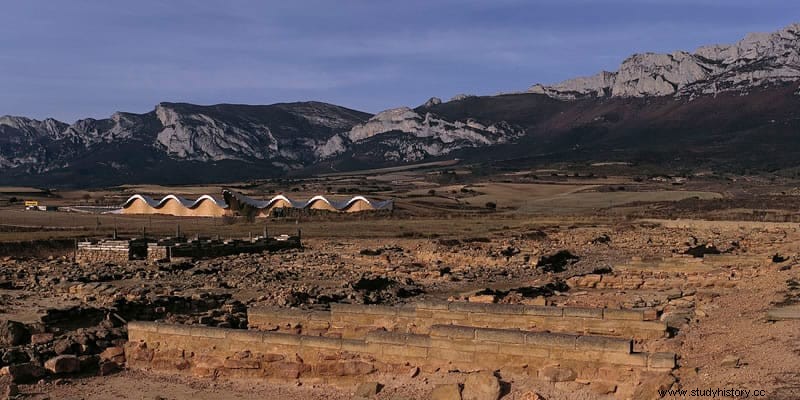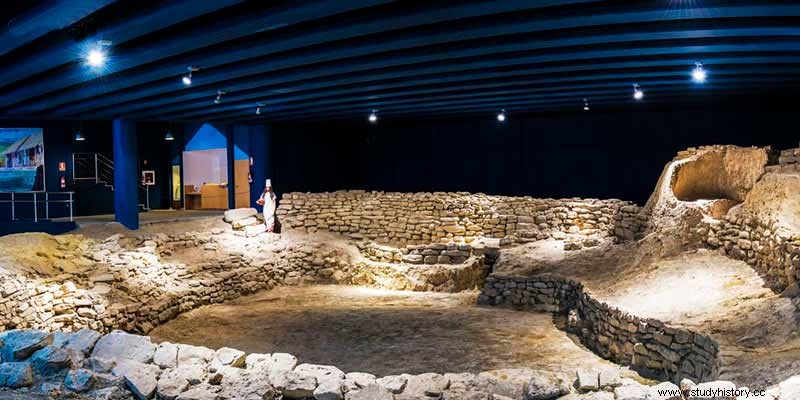The Neolithic and Celtiberian settlement of La Hoya is located about six hundred meters from the town of Laguardia , heading north, is this important site, occupied for the first time back in the fifteenth century before Christ. The importance of the settlement is proven by an important defense that surrounds this population, which has an area of about four hectares and which became an outstanding commercial center and organization of the territory. In its surroundings, also proof of the important human presence since the beginning of time, different megalithic funerary monuments are concentrated, such as the San Martín dolmen, La Chabola de la Hechicera or the Sotillo dolmen .
Step through time in the Neolithic settlement of La Hoya
The Neolithic and Iron Age settlement of La Hoya was discovered in 1935 by a resident of the neighboring city of Laguardia , and the first excavations were carried out in 1950 and were not continued until the 1970s. Currently, a small but interesting museum installed on the site allows the traveler to discover the history of this important settlement. The material remains found in the excavation of the oldest levels indicate that there was a first settlement around the fifteenth century before Christ, which had contact, judging by various findings, with the megalithic cultures of the Bell Beaker . These new settlers settled on a small hill from which they dominated the surroundings against possible incursions by their enemies. They were people of the Indo-European type, who entered the Iberian Peninsula from the cold regions of Central Europe, through the various passes of the Pyrenees. In this early period, the inhabitants already had to seek their defense and extended a walled belt first with a simple wooden palisade and later with another of a somewhat crude masonry, but undoubtedly more effective. Two centuries later, in the XIII a. C, new Central European people arrived who changed certain constructive aspects of the town. This second phase of occupation is characterized by a greater use of stone, both in the lower levels of the houses and in the wall that constituted their defense against attacks by rival clans.

Constructions in the Neolithic settlement of La Hoya
In any case, most of the remains visible today refer to a Celtiberian settlement from the 4th century BC. A rectangular area of the town has been discovered, in the center of which there is a curious block of flats, shaped like a bow , around two central courtyards and which are bordered by streets on three sides. Quite possibly more houses are found under the areas that have not yet been excavated, since the foundations of other neighboring houses can be guessed along with the constructions. The narrow entrance to the rudimentary and primitive fortress is arranged in front of the vertex of the triangular block of houses and the stone wall starts on each side. Both because of the size of the stones they used and because of the size of the houses, the houses of the Celtiberians were significantly larger and more robust than those of their predecessors. However, a large number of ceramic remains have been recovered from Neolithic and Iron Age occupations, which, together with Celtiberian tools and weapons, provide an approximate idea of the different cultures that lived here.

Museums of discovered objects
In the small museum attached to the site you can admire some of the objects found there. Various ceramic pieces from all the periods represented here, Celtiberian weapons, bronze ornaments and brooches from the last period, cult objects, carved horn pieces used as whistles to communicate, and even a curious series of weights that indicate the importance of this settlement. as a shopping center. However, not all the finds are in this museum, since an important part of them are exhibited in the Provincial Museum of Álava.
